01/09/2022
At the recent Zip Water UK and Facilities Management Journal (FMJ) roundtable, several senior FMs gathered to discuss the challenges faced by FMs today, with a focus on sustainability, health and wellbeing.
One subject that prompted discussion was the importance of office ambience and collaborative spaces; it became quickly apparent that though some elements were the same across the board, different working environments required different approaches from FMs.
The benefits of creating collaborative workspaces and improving office ambience are worth the effort required – that’s certain. But creating a suitable office environment for all employees at work can be a momentous challenge for FMs. For starters, office and work environments need to improve employee wellbeing and enhance productivity and creativity.
Let’s explore the importance of office ambience and collaborative workspaces, and how to achieve the optimal working environment for your business.
The importance of office ambience for employee wellbeing and retention
What are the benefits of a positive office ambience?
How to improve office ambience
The importance of collaborative spaces
What are the benefits of a collaborative office space?
How to make a good collaborative office space
Office ambience may seem a slightly vague term, but it really encompasses everything from the culture of the company to the appearance and atmosphere of a workspace.
And companies that disregard the importance of ambience will usually have a workplace that reflects that – plain and rigid in structure, with a lack of collaborative workspaces and a cold, corporate feel. In offices like these, employee wellbeing is relegated in terms of priority, and the business could struggle with employee retention.
If you want your business to project a modern, forward-thinking image, you need offices to match. As such, creating a comfortable and calm environment, with a sleek and modern design, is essential to maximise productivity, enhance employee wellbeing, and attract top talent.
There are many benefits of creating a positive office ambience at work. Here are our panel’s five key takeaways:
Unsurprisingly, a workspace that’s pleasant and uplifting will be better for employee morale. On the other hand, if a space is drab and sterile, it is unlikely to inspire creative thinking or productivity.
Therefore, paying close attention to the features and purpose of every space at work, and adjusting to the needs of staff accordingly, can pay dividends when it comes to the happiness of your employees.
Offices that have a lifeless feel and disregard the impact of a workspace on staff are likely to struggle to retain employees.
If people feel that their place of work is uninviting and stifles their ability to perform, they may look to find a space that meets their needs elsewhere. In fact, research by Dell indicated around 70% of UK office workers would consider leaving their job if their workplace wasn’t inspiring to work in.
If you want your company to have a strong brand and a culture that people can quickly connect to, then you need to start with the space your staff spend every working day occupying.
A place of work should reflect the values of a business; if sustainability is a priority, you would expect plenty of recycling points, and for wellbeing and productivity, hydration stations.

Placing a few references to the company's greatest achievements in high-traffic areas can also help staff feel proud of their work, and that they're a part of something greater.
Office ambience is central in establishing company culture: you would expect a young, vibrant, and creative environment to have an office to match; for example, a modern, sustainable space filled with art and bold designs that also utilises the latest technology.
Just as location can give employers an edge, so can offices that give the impression of a dynamic, enterprising business.
A workplace should be clean and modern; designs may change in future – and you should make an adaptable space to keep up with competitors in this regard. But the best offices are currently utilising minimalist and industrial aesthetics, natural accents and lighting, and different zones depending on working preferences.
Keep in mind that while you want a space to be appealing to prospective talent, you also need it to be functional and a solid reflection of the business.
Happy employees are productive employees. Taking the emotional and physical wellbeing of your staff into account ensures their performance at work remains consistently high.
Providing a space that allows people to thrive at work and enhances their level of communication and creativity is the ultimate aim of office design for FMs.
And the research agrees, with around two thirds of office workers saying a positive work environment has the power to cause productivity levels to rise.
Everything you see in an office contributes to its ambience: the seating, the lighting, the layout. Even the colour of the walls.

It’s important to consider every aspect of a space and its ability to influence your employees' mood, productivity, and creativity – so here are 5 simple but effective ways to improve office ambience:
There is no right way to map out the layout of your office. There have been several ideas and theories over the last decade, and there are certainly some less than useful ways to use a space, but the best layout of your office building is always what your employees need.
Workers are individuals, all with different preferences and priorities. Introverts will value personal space and need areas of respite from others, while extroverts may relish the opportunity to communicate with others throughout the day.
The placement of a desk alone can be a contentious subject, and whether you plan to abandon the traditional desk layout in favour of hot desking or a more collaborative workspace, you should always get the opinions of your staff first.
Bringing nature into the workplace has a positive effect on productivity and employee morale, and boosts focus. If you have outdoor spaces that are easy to access they should be utilised whenever possible.
Terraces can be used as meeting rooms, or simply as a space to give workers the chance to take a breather from the office. If your company lacks outdoor space, you can still mimic the effects of being outdoors inside the office.
Time in nature is calming and restorative, so it’s no surprise that this effect is beneficial at work. To create a space that reflects the natural world, you can use indoor plants, natural textures like wood, a light colour palette of blue, green, and white, and take advantage of sources of natural light.
Natural light improves health and wellness in the workplace, which ultimately boosts productivity. A space flooded with natural light has the power to lift moods; in the absence of natural light, warmer lighting is preferable to harsh fluorescents.
Ventilation is also important as it directly impacts the health of staff – if a space is well ventilated, contaminants in the air are removed far quicker.

At our roundtable event, the use of air purifiers was discussed. It was argued that a bacteria-removing air purifier made employees feel more comfortable in the wake of the pandemic, and would have long-term benefits in reducing time spent off work due to illness.
Maintaining a pleasant temperature, providing comfortable – and ergonomic – furniture, and giving staff the option to play music can all improve the ambience of a space.
It might sound simple, but that means it can be often overlooked!
Additional amenities like a games room, breakout area, or food and drink stations help make your employees feel appreciated.
Employees will see the investment of the company into their wellbeing, and feel valued as a result. These additional amenities may seem small or less of a priority, but they’re essential for maintaining the health and happiness of your staff.
One such amenity is having plenty of hydration points, which is vital for employee wellbeing. Even being slightly dehydrated can see a drop in productivity of 50%, and 89% of the population fails to drink their recommended daily intake of water.
Installing a Zip HydroTap, the world's most advanced drinking water system, will encourage staff to drink more frequently.
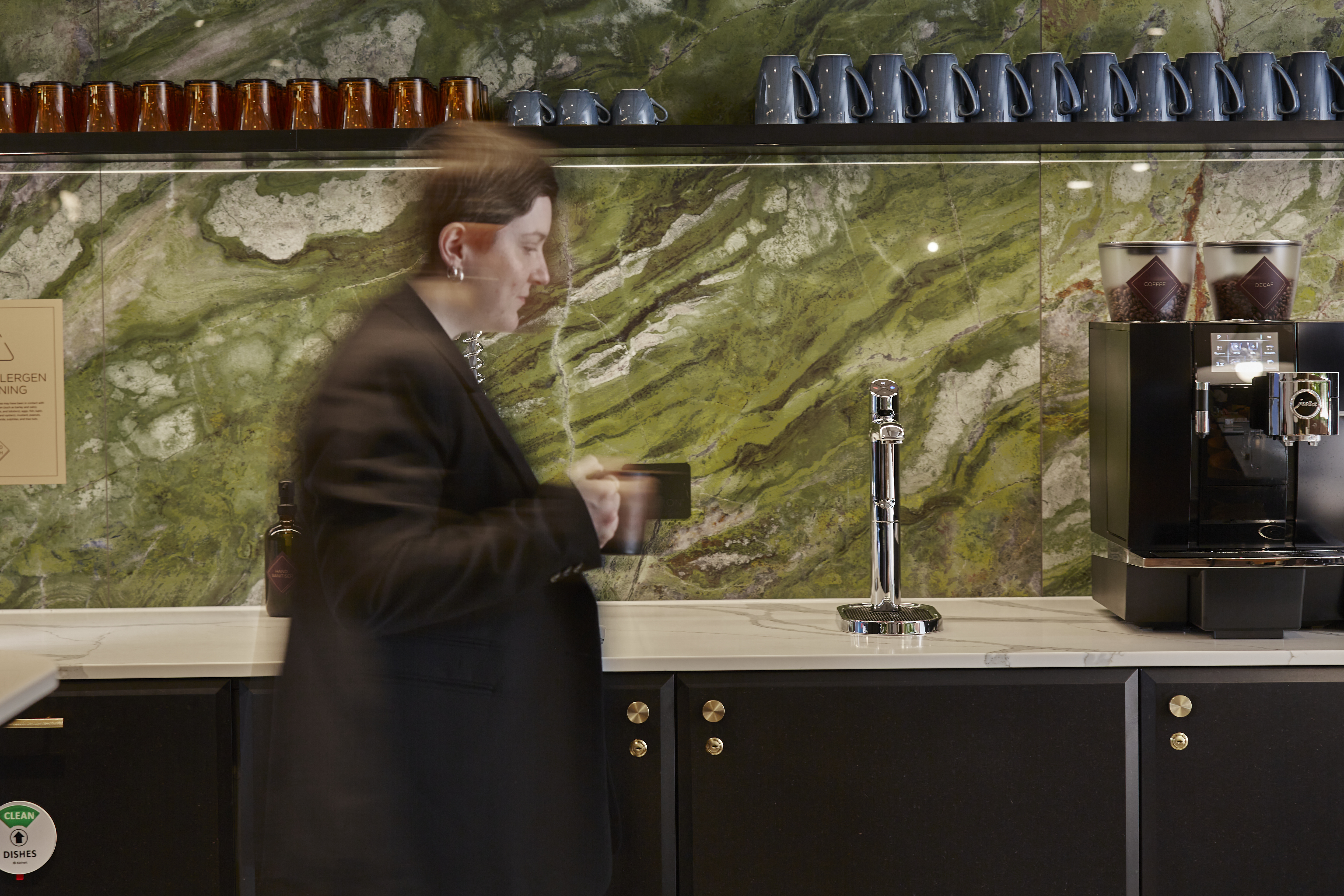
With a choice of filtered chilled, sparkling, and instant boiling water available at the touch of a button, staff will be able to stay hydrated with great-tasting water that makes single-use plastic bottles obsolete – and cut time when they need an inevitable caffeine boost!
For a long time in office environments, it was the norm to either have your own office, or to create an office space that mimicked it; i.e. each employee having their own cubicle.
Collaborative workspaces were limited to meeting rooms, and creative discussions would rarely occur at your own desk. Since then, businesses have changed priorities: it's now all about creating a collaborative workspace, normally in the form of an open office.
During the pandemic, working from home became a necessity, and a new mode of work took over. Working remotely, either full-time or on a hybrid basis, has since become the norm, but returning to the office is a strong concern for businesses – and collaboration has been the primary purpose.
At the roundtable, Ian Baker, Head of Workplace at EMCOR UK, revealed that a survey across the business found "collaboration was the number one reason for coming into the office," followed by attending meetings in person.
It's clear that giving staff access to a collaborative space is essential in enticing people back into the office.
Developing a creative environment that suits everyone isn't easy, but it’s important: a collaborative office space can promote idea sharing, develop stronger relationships between teams, and boost productivity.
Here are just a handful of its advantages:
On average, employees spend 80% of their time collaborating on projects. Providing a space that acknowledges this and makes it easier to do can therefore naturally boost productivity and help with idea sharing.
To provide the best workspace for productivity, find a balance between collaborative areas and those for quiet focus. Ideally, more space should be dedicated to collaboration than solitary endeavours.
When an office is designed to be a collaborative space, people are able to readily communicate. A workspace without barriers encourages discussion and teamwork, which can only benefit the ability of a team to generate ideas – and complete projects to a high standard.
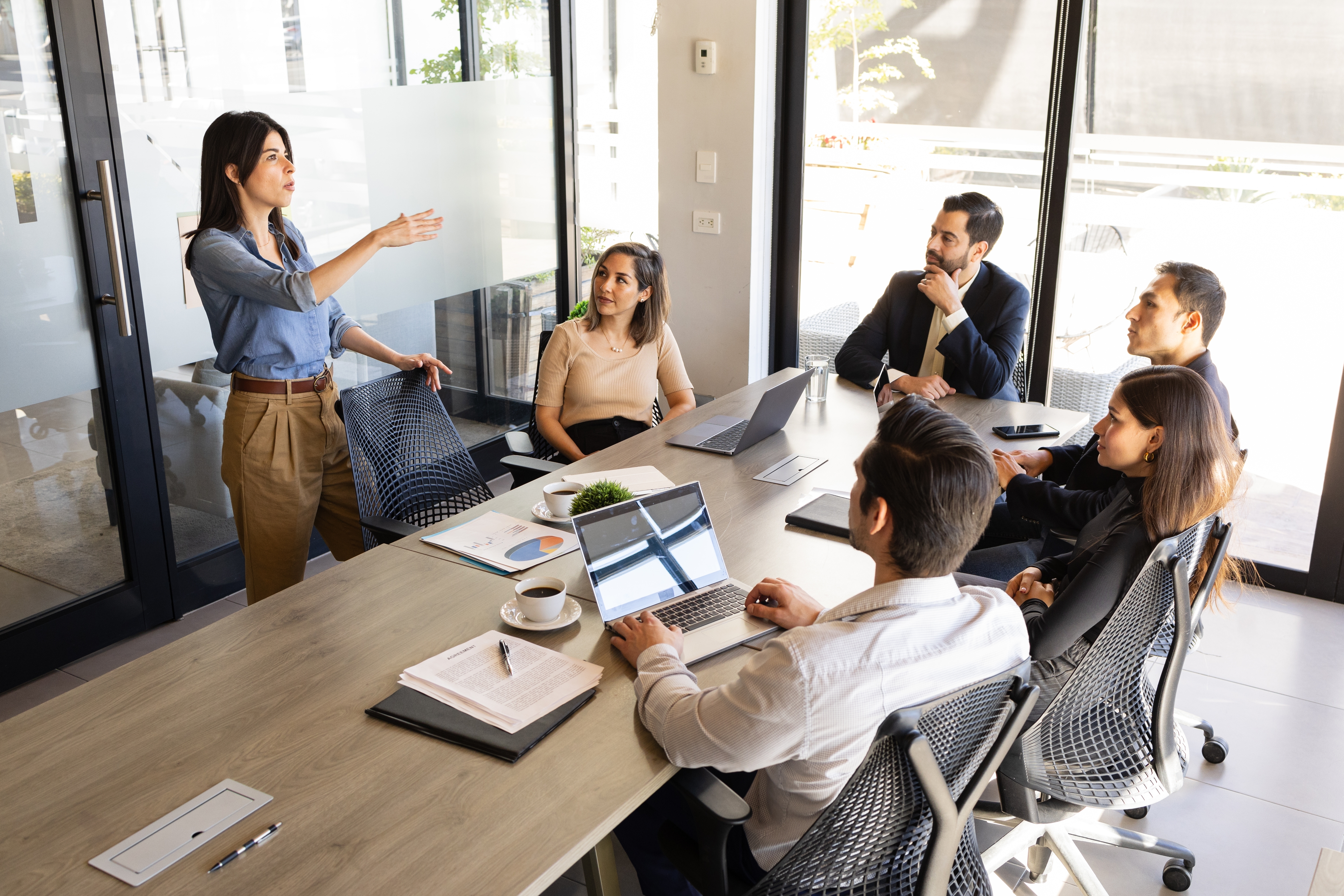
These spaces can also be useful in aiding collaboration between different teams; sharing ideas across departments and among people with different strengths makes the whole business more effective.
Being in the office at all helps with training and development, as it is easier to learn from others and ask questions when you're in the same location. A collaborative workspace makes this process even easier by encouraging constant interaction with experienced staff, promising a seamless integration into the company for new employees.
Designing a space that makes communication natural and effortless goes a long way in forming a close and effective team – one able to support each other and identify each other's strengths and weaknesses.
Balancing collaborative workspaces with other areas does, however, require a measured approach. If done poorly, a collaborative office space can have a negative impact on employees; for instance, they may find their relationships with co-workers deteriorating and struggle to focus.
Employees have their own preferences; what may suit one person could be a difficult environment for another. You need to consider all the variables: how many people are in the building at any one time, its total capacity, any equipment needed, your workplace demographic, the purpose of a space, and so on.
Here are some of the key things to think about when designing a collaborative workspace:
To create a workspace that encourages collaboration, you should remove any unnecessary barriers; open spaces allow people to speak freely with their colleagues, especially with a seating arrangement that places employees in groups (or with enough areas for group discussion).
Some workplaces may find that hot desking may be the most effective; it encourages people not to stick to any one location, and can enhance the collaboration of different departments throughout the business.
However, some may find this method disruptive, so it is important to evaluate employee responses to the practice.
While team collaboration can and should occur in a normal working area, offering breakout spaces that enable staff to change their surroundings can help by offering added flexibility.
Breakout spaces should be a location in the office that fit a multitude of purposes: an informal meeting area for a team to generate ideas, discuss a brand new project, a place to escape your desk, or even just a place to relax and socialise at lunch.
Determining what is right for your business is a learning curve – spaces you may have thought would be received well may go unused, while others can perform better than expected.
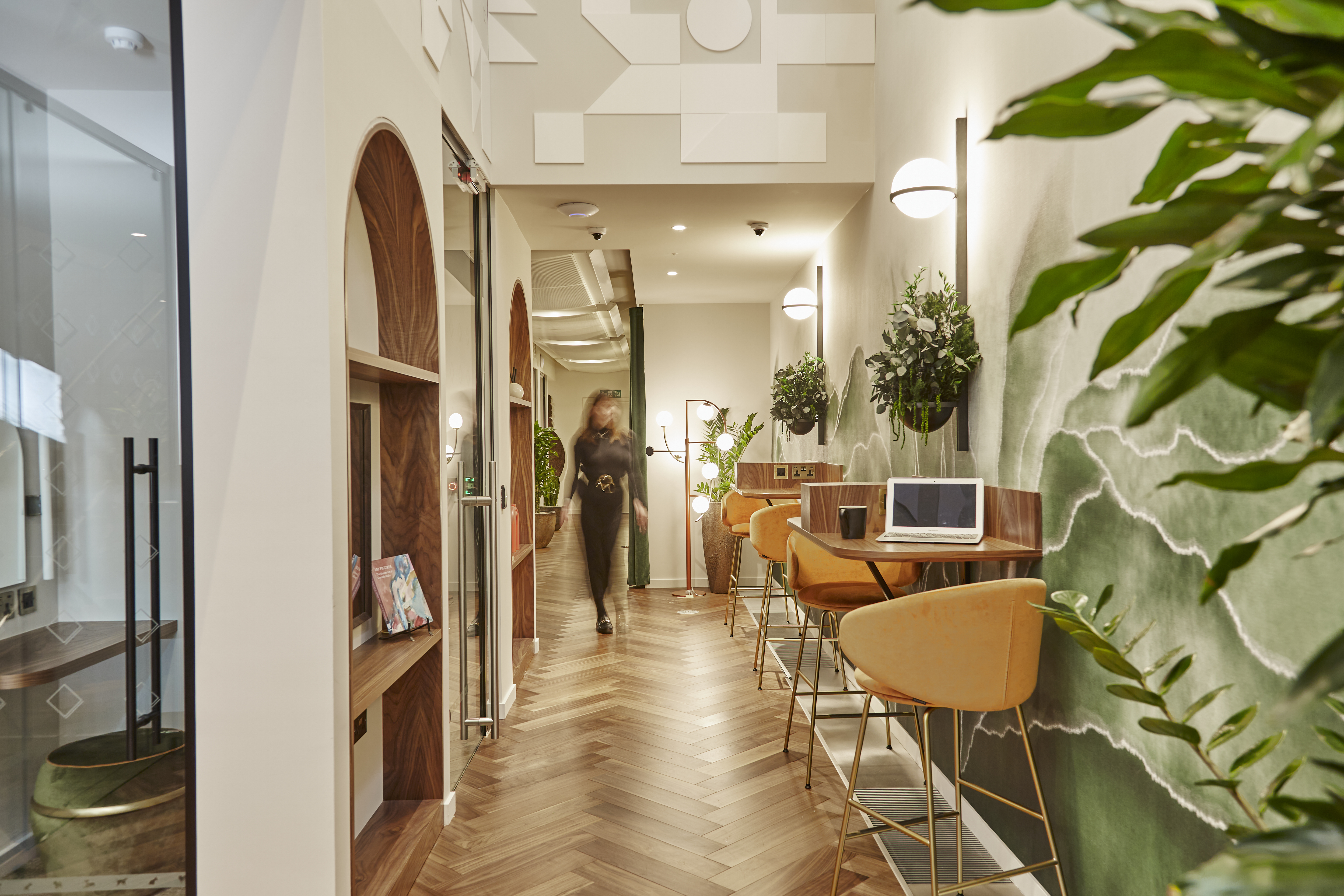
You need to consider how many people use a space at any one time; if a certain location in the office is used more frequently than others, and, on the flip side, if a location isn't being used enough.
No one group of people will feel the same way about changes to their workspace; different companies – and industries – will have their own needs.
Listening carefully to feedback and analysing the results of any new change is essential if FMs want to achieve their goals.
It was highlighted during the FMJ round table that there’s little point in designing a collaborative space if no-one is going to use it.
Simi Ghandi-Whitaker, Strategic Technology Director at Mitie, championed the use of technology to drive strategy for FMs, and to analyse patterns of working. She expanded on this by detailing the use of sensors at Mitie, which were used in every room to record their usage; from this, they were able to tell if a location was being used regularly, or if those spaces could be put to better use.
Simi commented that when creating a collaborative space, you want to ensure you're "doing it for the right reasons, and have the data to back up those reasons. You need to ask yourself why you're doing it."
If you want to make your workspace stand out from the crowd, consider a Zip HydroTap. With a modern, sleek design and technological advancements like touch-free sensors and anti-microbial touchpads available, it's a hydration solution that promotes sustainability, wellness and innovative design for your business.
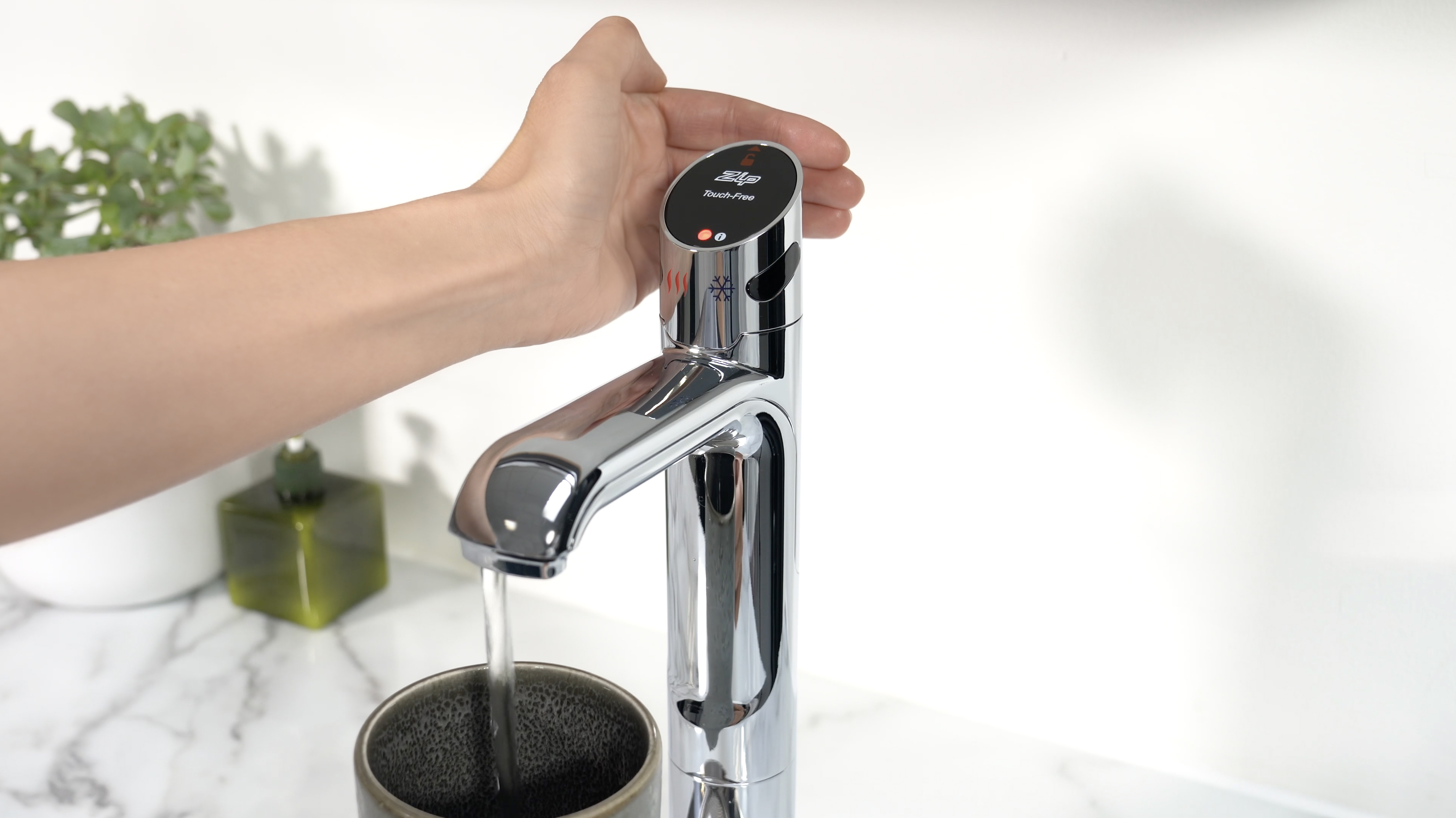
Incorporate private spaces
When given the task of creating a collaborative workspace, it can be tempting to throw all of the previous system out the window and go ahead with new ideas.
But if something worked well before, it will continue to work well in the future. Meeting rooms and private spaces have their place in an office. In fact, they may be more important than ever, as the rise of remote working has made the likes of Teams and Zoom calls an irreplaceable part of working life.
Of course, this creates the need for a secluded quiet space to conduct calls. Having designated 'phone booths' to take phone calls is a great way to accommodate this need without occupying too much space.
Meeting rooms can still be part of offices that prioritise collaboration in their design, but these spaces should be limited to a smaller selection. They should be used for confidential meetings, and are necessary for private discussions, but normal meetings can and should be held in a collaborative workspace.
Flexibility is the key to an optimal working environment; people should be able to move around the office with ease to collaborate with others, but also have access to an area for quiet work when needed. You need to blend open spaces with private spaces in order to create an adaptable workspace.
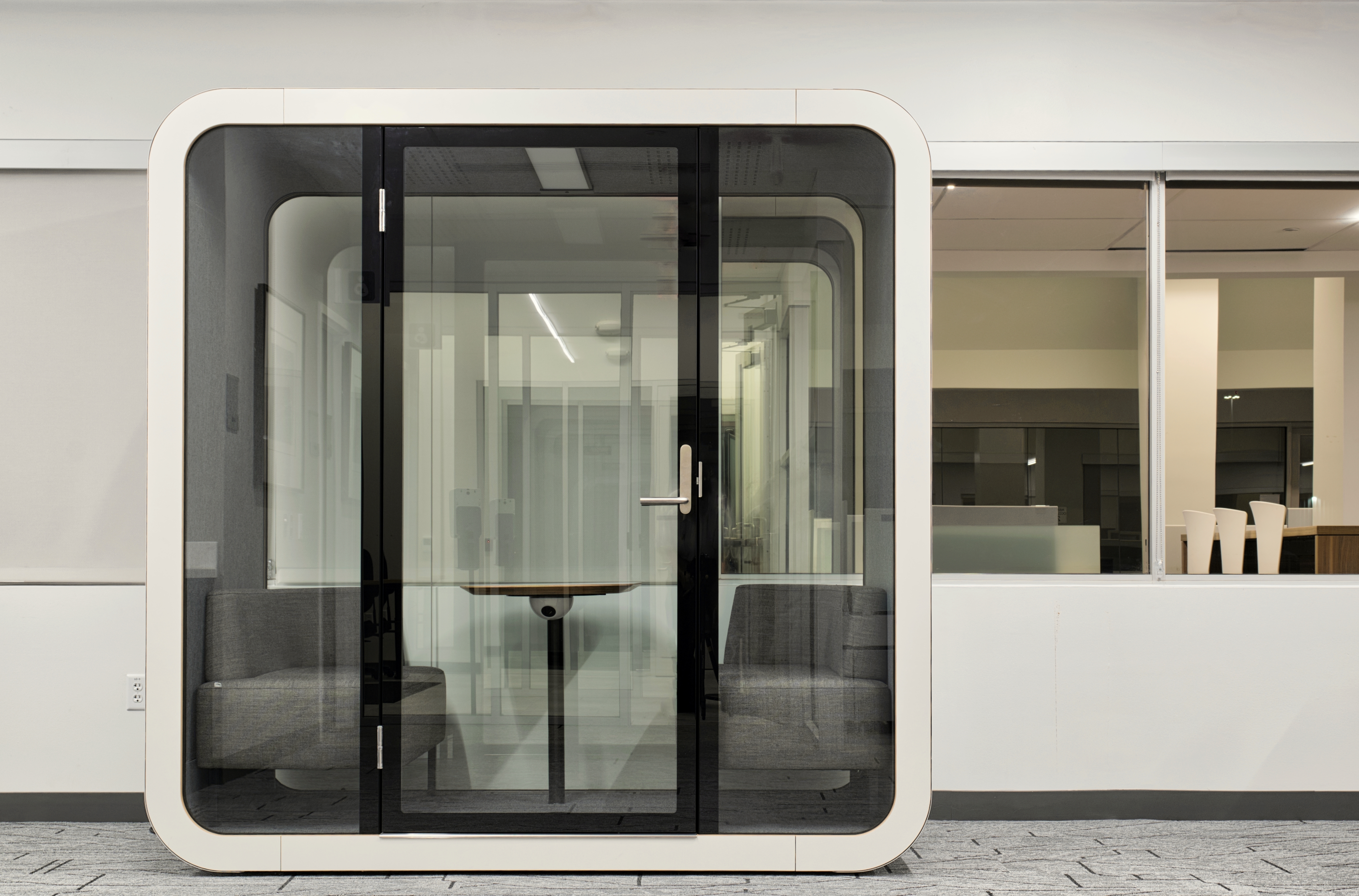
Work environments are difficult to perfect, but by responding to staff feedback, you can make a space that works for your business.
As mentioned at the roundtable, 90% of business costs are tied up in people. If initial investment, as required to enhance office ambience and make a collaborative workspace, is needed, it will only reduce the larger cost of people long-term, as productivity and employee retention improves.
As with any investment, office design should always be carefully considered and paired with a clear strategy. When it works well, it's invaluable for a business: enhancing productivity, teamwork and general employee wellbeing are only a few of the rewards for excellent workplace design.
To discover more advice from top FMs on the current challenges in the UK, watch the Zip Water UK and Facilities Management Journal roundtable.
Talk to us about your next project, request a brochure or arrange a full product demo with one of our team.
